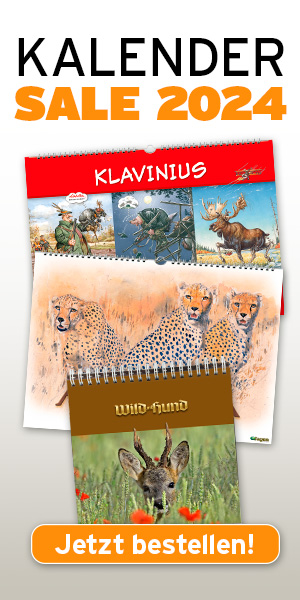English: Mouflon; French: Mouflon; Albanian: Mufloni; Bulgarian: Muflon; Croatian: Muflon; Czech: mufloni zver; Dutch: Moeflon; Greek: Agrioprovato; Hungarian: Muflon; Iranian: Chuche-Armani, Chuch-e-Lar, Chuch-e-Chermez, Ghuch-e-Shiraz; Italian: Muflone; Lithuanian: Muflonas; Montenigrin: Muflon; Norwegian: Mufflon; Polish: Muflon; Portuguese: Muflon; Romanian: Muflon; Russian: Baran; Swedish: Mufflon; Serb: muflon; Slovakian: muflonia zver; Slovenian: muflon; Spanish: Muflón, Musmón: Turkish: Yaban koyunu, Dag koyanu.
Former distribution: Corsica and Sardinia, Turkey, Iran, USSR, Transcaucasia.
Present distribution: Northern and southern Corsica, eastern Sardinia, reintroduced into the northern coast of Sardinia, Asinara Island and Capo Figari, and north-west Cyprus, Turkey, Iran, Transcaucasia. Introduced into Austria, Holland, CSSR, FRG, GDR, Hungary, France, Italy, Switzerland, USSR, Poland, Romania, Bulgaria, Yugoslavia, Belgium, Spain, Finland, Sweden, Denmark, Luxembourg, USA (California, Texas, Hawaii), Argentina and the Kergueles Islands.
Behaviour: Preferred habitat: open, mountainous, semi-arid, rocky regions. Introduced stock in central Europe now inhabits open deciduous forests in low and hilly areas. They live gregariously in family groups of up to 10-25, active at twilight and by day. Mouflon are grazers and browsers; diet includes grasses, herbs, shoots, twigs, forest fruits, bark and leaves. Predators include wolves, lynxes, foxes and eagles.
Population status: Endangered in Corsica, Sardinia and Cyprus. Stable in all countries where introduced. Estimated numbers: Europe 55 000 (1982) enclosure included; (acc. to the CIC Symposium) Corsica: 300; Sardinia: 300-500; Cyprus: 150; Bulgaria: 1300; CSSR: 14 500; FRG: 8000; GDR: 3000; France: 5000; Italy: 4000; Yugoslavia: 3000; Luxembourg: 80; Holland: 400; Austria: 6000; Poland: 300; Romania: 600; USSR: 500; Spain 3000; Hungary: 5000; Sweden: 50; Norway: 100.
Brief notes:
Body weight: 45-55 kg
Head and body length: 120-130 cm
Tail length: 5-8 cm
Shoulder height: 70-80 cm
Gestation period: 5 1/2 months
Maximum age: 15-18 years
Trophy: Record SCI: 145 5/8 score, CSSR, TILLMAN CAVERT jr.; average 105 score. RW’s: 27″, 1902 Cyprus, LORD ROTHSCHILD. CIC: 245.40 points, 1986 CSSR, JAROSLAV BOCEK, average 185 points.
Hunting methods: Stalking, from a hide.
Subspecies: 6
1. Mediterranean Mouflon Ovis m. musimon Corsica, Sardinia, Cyprus and the European continent. Endangered: Corsica, Sardinia, Cyprus. Stable in central and western Europe.
2. Anatolian Mouflon: Ovis m. anatolica Central Turkey, Konya Bozdag Mountain Reserve. Endangered. Estimated numbers: 650 (acc. to CIC Symposium, Ankara 1987). Trophy: No records.
3. Trans-Caucasian Mouflon Ovis m. gmelini USSR, Transcaucasia; eastern Turkey; north-western Iran. Rare. Estimated numbers: No records. Trophy: SCI: 138 2/8 score, 1965 Iran, RASHID JAMSHEED; average 115 score. RW’s: 40 1/8″, 1898, British Museum (W. BURCHART BAKER). CIC: 231.55 points, Iran, FA THE AMIN.
4. Red Sheep: Ovis m. orientalis Northern Iran: Alborz Mountains, south to Isfahan. Stable? Trophy: Record SCI: 141 3/8 score, 1978 Iran, MASSIH KIA; average 100 score. RW’s: 40 1/2″, 1965 Iran, F.E. ESTRADA. CIC: 216.45 points, 1952 Iran, H.I.H. Prince ABDORREZA
5. Isfahan Mouflon Ovis m. isphahanica South-western to south-eastern Iran. Stable? Trophy: Record SCI: 157 7/8 score, 1977 Iran, RICARDO MEDEM; average 110 score. RW’s: 34″, 1967 Iran, F.P. WILLIAMSON.
6. Laristan Mouflon Ovis m. laristanica South-western Iran; Laristan. Rare. Trophy: Record SCI: 141 score, 1977 Iran, RASHID JAMSHEED; average 110 score. RW’s: 36 1/8″, (188 points), 1971 Iran, M. ZONAILO.
Remarks: VALDEZ (1982) considers this sheep as hybrid between O.m. gmelini and O.o. arkal. More research required; also recent information concerning the population status, especially in the Iranian regions, no doubt changed as a result of warfare. According to POPLIN (1979) and UERPMAN (1979) the mouflon populations in Corsica and Sardinia are not indigenous; they are descendants from domesticated sheep of the Neolithic age which later became feral. A reclassification of the Moufloniformes species is therefore required. The author’s classification listed here should be discussed. GEIST (1987): „The origin of the small Cyprian mouflon is in doubt, as is that of the Corsican and Sardinian mouflons. They may be early domestic sheep translocated by humans (BUNCH et al. 1978 b; VALDEZ 1982; DAVIS 1984); in Corsica and Sardinia mouflons do not appear earlier than 6000 BC. These later mouflons share haemoglobin A with domestic sheep (BUNCH et al. 1987b).







